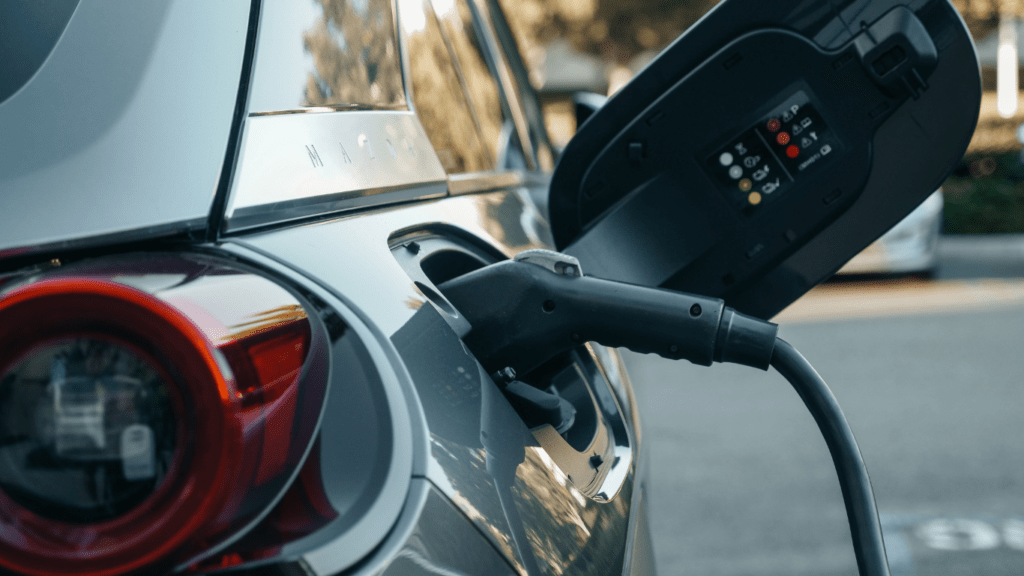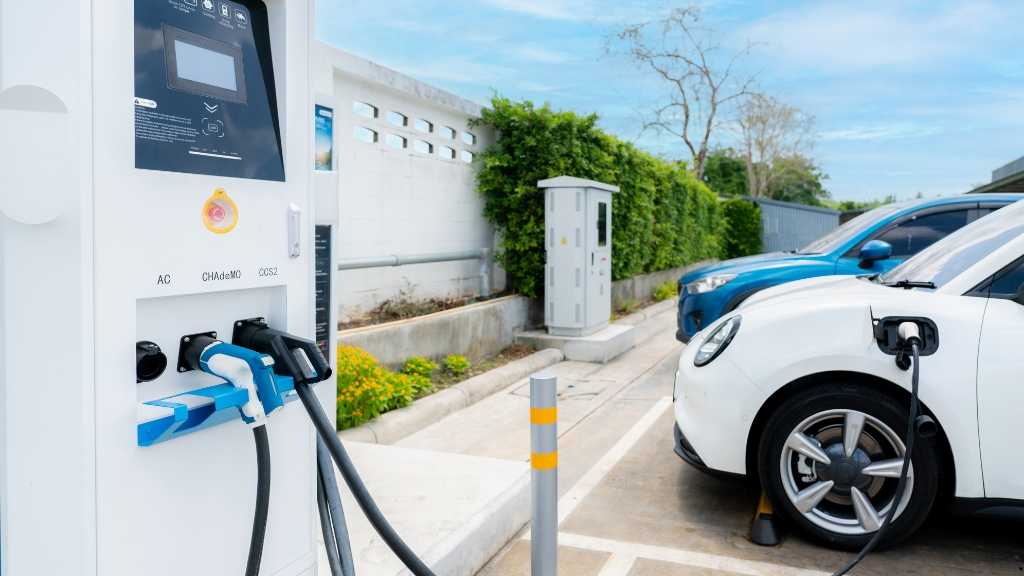Overview of EV Battery Evolution
EV battery evolution has been marked by significant strides in technology. These advancements have centered around improving energy density, reducing charging times, and employing sustainable materials. In the early days of EVs, lead-acid batteries dominated, but they were heavy and offered limited range.
The introduction of lithium-ion batteries revolutionized the industry. These batteries are lighter, charge faster, and provide higher energy density compared to lead-acid batteries. For example, Tesla’s Model S features lithium-ion batteries, which offer driving ranges exceeding 300 miles on a single charge.
Solid-state batteries are the latest innovation in EV battery technology. These batteries replace the liquid electrolyte with a solid one, enhancing energy density and safety. Companies like Toyota and QuantumScape are leading the charge in developing solid-state batteries.
Another critical area of evolution is the use of sustainable and less scarce materials. Cobalt reduction in battery composition is a significant focus, as cobalt mining raises environmental and ethical concerns. IBM Research is exploring batteries that use materials extracted from seawater, aiming for sustainability.
Fast charging is also evolving rapidly. Early EVs took several hours to charge fully. Today, high-power charging stations can recharge batteries to 80% in under 30 minutes. For instance, Porsche’s Taycan offers 270 kW charging capability, drastically reducing downtime.
EV battery evolution continues to break new ground in energy density, charging speed, and sustainability. These developments are making EVs more accessible, efficient, and environmentally friendly.
Advances in Battery Chemistry

Battery chemistry has seen significant strides in recent years. These advancements are key to unlocking higher energy densities, improved safety, and faster charging times.
Lithium-Ion Improvements
Lithium-ion batteries are the cornerstone of modern EVs. Researchers have improved these batteries by enhancing the materials used. One major innovation is the development of high-nickel cathodes. These cathodes increase energy density and extend the battery’s lifecycle. For example, Tesla’s Model 3 employs these advanced cathodes.
Improving electrolytes has also been a focus. By using liquid electrolytes with additives, researchers have managed to boost battery stability and reduce the risk of overheating. This approach enhances overall safety, promoting consumer trust in EV technology.
Manufacturing processes have evolved as well. Techniques such as dry electrode coating reduce production costs and environmental impact. Companies like Tesla and Panasonic are leading this charge, making EVs more affordable and sustainable.
Solid-State Batteries
- Solid-state batteries represent a significant leap in battery technology. Using a solid electrolyte instead of a liquid one, these batteries promise higher energy densities and increased safety.
- One of the primary advantages of solid-state batteries is improved energy density, leading to longer driving ranges. Toyota has been a pioneer in developing this technology, with plans to commercialize it by the mid-2020s.
- Safety enhancements are another critical benefit. Solid electrolytes reduce the risk of leaks and thermal runaway, a common issue with liquid electrolytes. QuantumScape, a notable player in this space, claims their batteries can be safer and last longer.
- Solid-state batteries can support faster charging times. This is crucial for reducing downtime during long trips. Research and development continue to focus on overcoming existing challenges like cost and scalability, but the potential benefits make solid-state batteries a promising avenue for the future of EVs.
Enhanced Battery Management Systems
Enhanced battery management systems (BMS) play a vital role in improving the efficiency and safety of EV batteries. These systems incorporate advanced technology to ensure optimal performance.
Smart Charging Solutions
Smart charging solutions use intelligent algorithms to optimize charging cycles. This minimizes battery degradation and extends battery life. For instance, dynamic charging adjusts the charging rate based on the battery’s current state, reducing stress and heat generation. Time-of-use charging schedules take advantage of lower electricity rates during off-peak hours, resulting in cost savings. Remote monitoring through mobile apps allows users to start, stop, or schedule charging sessions from anywhere, adding convenience and flexibility.
Thermal Management Enhancements
Thermal management enhancements ensure batteries operate within optimal temperature ranges. Effective thermal management systems prevent overheating, which can lead to reduced battery lifespan or even safety hazards. For example, liquid cooling systems circulate coolant to dissipate heat more efficiently than traditional air cooling. Phase change materials (PCMs) absorb and release thermal energy, maintaining stable temperatures. Active cooling systems integrate with the EV’s HVAC system, using refrigerants for improved temperature control. These advancements in thermal management contribute to better battery performance and longevity.
Impact on Vehicle Performance
Advancements in EV batteries significantly affect vehicle performance. Key areas of improvement include extended range and faster charging times.
Extended Range
Increased energy density directly impacts vehicle range. Modern batteries offer higher capacity, allowing EVs to travel farther on a single charge. For instance, Tesla’s Model S achieves over 400 miles. Using materials like high-nickel cathodes contributes to this improvement. Solid-state batteries further enhance range by providing even greater energy storage in a smaller size. This evolution makes EVs more practical for long-distance travel, reducing range anxiety for drivers.
Faster Charging Times
Charging speed improvements enhance the user experience and convenience. High-power charging stations, such as those from Porsche’s Taycan, now charge batteries to 80% in under 30 minutes. Innovations in charging technology, like smart charging solutions, reduce overall charging time while protecting battery health. These advancements in charging infrastructure make EVs as convenient as gasoline vehicles, promoting wider adoption of electric mobility.
Environmental Considerations
Environmental considerations have become increasingly important in the evolution of EV batteries. Companies and researchers emphasize sustainability and recycling innovations to minimize ecological impact.
Sustainability
Battery makers focus on sustainability by using eco-friendly materials. Reducing cobalt in batteries addresses both environmental and ethical concerns, as cobalt mining has adverse effects. Companies like Tesla aim to eliminate cobalt from their batteries, instead opting for nickel-based chemistries. Additionally, IBM Research’s exploration of seawater-extracted materials represents a breakthrough in sourcing sustainable raw materials. These efforts contribute to a greener supply chain and reduced carbon footprint.
Energy-efficient manufacturing processes are another aspect of sustainability. Dry electrode coating, for example, decreases energy consumption during production. Companies also implement closed-loop manufacturing systems to recycle waste materials directly within the production cycle, minimizing landfill contribution and resource depletion.
Recycling Innovations
Recycling innovations are crucial for managing end-of-life EV batteries. Advanced recycling techniques recover valuable materials like:
- lithium
- nickel
- manganese
For instance, Redwood Materials, a company founded by former Tesla CTO JB Straubel, is developing processes to efficiently reclaim and reuse metals from old batteries. This approach not only conserves resources but also reduces the need for new mining activities.
Battery second-life applications present another recycling innovation. When batteries no longer meet the performance standards for EVs, they can be repurposed for energy storage in renewable energy systems. Nissan’s initiative to use retired Leaf batteries in home energy storage solutions exemplifies this approach. By extending the useful life of batteries, these applications help maintain a circular economy and reduce waste.
Environmental considerations play a pivotal role in the ongoing evolution of EV batteries, as sustainability and recycling innovations minimize negative impacts and promote a more eco-friendly future.
Emerging Technologies and Future Trends
Several emerging technologies and future trends are shaping the evolution of EV batteries. These advancements promise to enhance efficiency, convenience, and sustainability in the electric mobility landscape.
Ultra-Fast Charging
Ultra-fast charging addresses the need for rapid energy replenishment. Modern high-power charging stations can charge batteries to 80% in under 20 minutes, making EVs more practical for long-distance travel. Chargers like the 350 kW ones from Ionity offer this high-speed convenience. Researchers are also exploring materials like silicon and graphene to develop electrodes that support faster charging. Combining these technologies, EV charging is becoming as swift and convenient as fueling a gasoline vehicle.
Wireless Charging
Wireless charging technology provides a seamless charging experience. This method, leveraging inductive charging, allows EVs to charge simply by parking over a charging pad. Companies like WiTricity are pioneering this technology, aiming for efficiency levels of over 90%. Dynamic wireless charging, where cars charge while driving over embedded roads, is also being tested. This technology could drastically change the EV charging infrastructure, making it more integrated and less obtrusive.
Emerging technologies and future trends in EV batteries, like ultra-fast and wireless charging, are set to revolutionize electric mobility.




